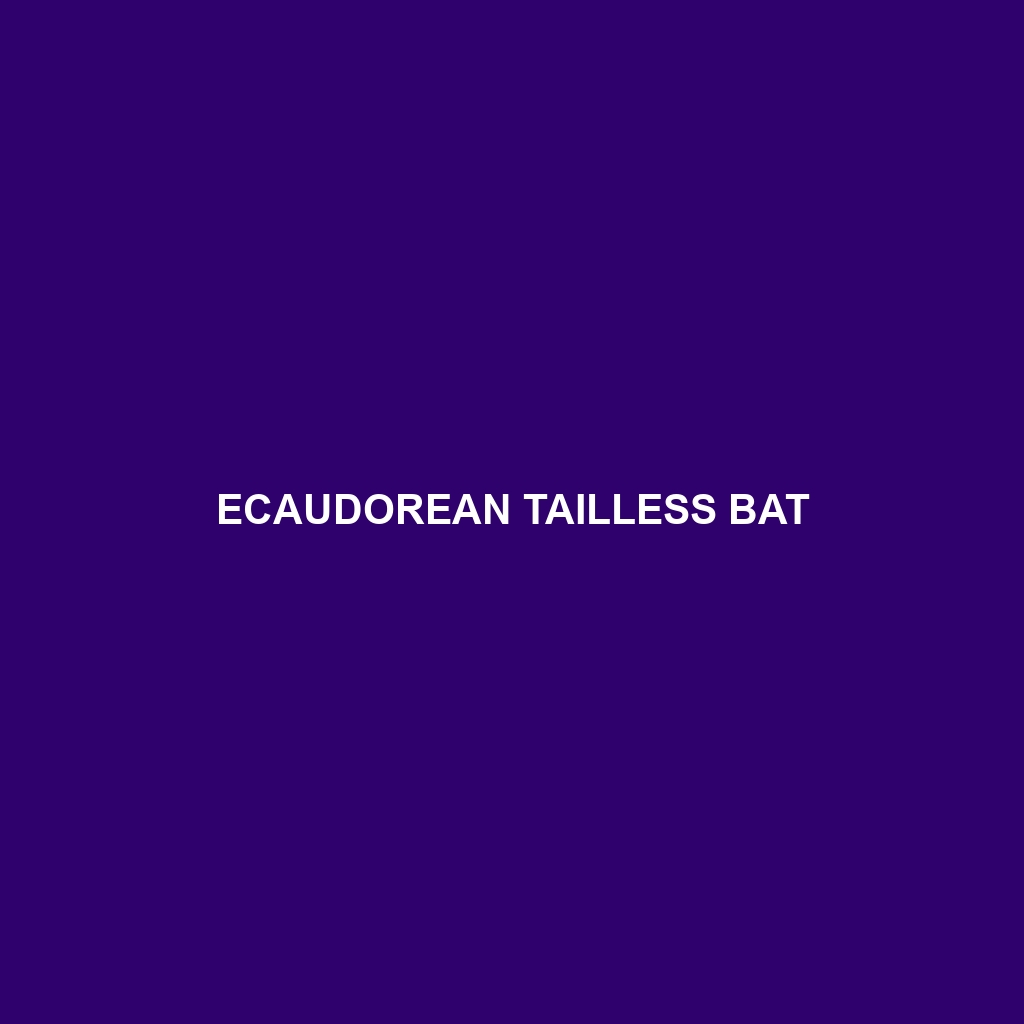Cuban Flower Bat
Common Name: Cuban Flower Bat
Scientific Name: Phyllonycteris poeyi
Habitat
The Cuban Flower Bat is primarily found in the lush forests and shrublands of Cuba, including the main island and smaller neighboring islands. This species typically occupies subtropical or tropical dry forests, moist lowland forests, and even urban areas where flowering plants are abundant. Its presence is closely associated with specific microhabitats that offer roosting sites and abundant food sources, making it an integral part of the Cuban ecosystem.
Physical Characteristics
The Cuban Flower Bat is a medium-sized bat, with a wingspan reaching up to 30 cm (approximately 12 inches). They exhibit a distinctive fur coloration, often showcasing a mix of brown, gray, and yellowish tones, allowing them to blend seamlessly into their surroundings. One of their most remarkable features is their elongated snout and large, trumpet-shaped nose leaf, which are adaptations that enhance their echolocation abilities, enabling them to locate nectar-rich flowers efficiently.
Behavior
This species is predominantly nocturnal, becoming active at dusk to forage for food. Cuban Flower Bats are known for their unique feeding behavior, where they hover in front of flowers, using their long tongues to extract nectar. They play a vital role in pollination, often transferring pollen between flowers, which supports the reproduction of various plant species. Their social behavior is also noteworthy, as they often roost in small colonies, providing social interactions that can lead to enhanced foraging success.
Diet
The diet of the Cuban Flower Bat primarily consists of nectar from flowering plants, particularly from species such as night-blooming cacti and various tropical flowers. They are also known to consume fruits and occasionally insects. This nectar-feeding habit not only sustains the bats but also facilitates pollination, making them crucial contributors to their environment’s botanical diversity.
Reproduction
Cuban Flower Bats typically breed once a year, with mating season occurring during the warmer months, usually aligned with periods of increased flower availability. After a gestation period of approximately 3 months, females give birth to one or two pups. Maternal care is strong, with mothers seen nurturing and protecting their young until they are capable of independent foraging.
Conservation Status
The Cuban Flower Bat is currently classified as Vulnerable due to habitat destruction and loss of foraging resources linked to urbanization and agricultural practices. Conservation efforts are essential to ensure the survival of this unique species, which plays a critical role in its ecosystem.
Interesting Facts
One fascinating aspect of the Cuban Flower Bat is its ability to navigate through dense vegetation using echolocation, which is highly refined compared to other bat species. Additionally, they have adapted to a unique diet that focuses on specific flowers found in their environment, showcasing their evolutionary specialization.
Role in Ecosystem
The Cuban Flower Bat serves as a key pollinator in the ecosystems of Cuba, as their feeding habits lead to the cross-pollination of various flowering plants. This not only contributes to the biodiversity of the area but also supports the growth of fruit-bearing plants, making them vital for the health of both flora and fauna within their habitats. Their interactions with other species, including predator-prey dynamics, further illustrate their importance in maintaining ecological balance.
